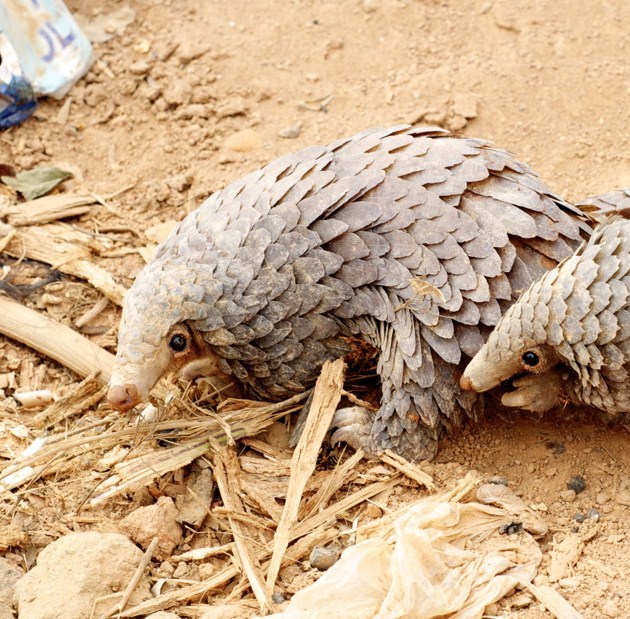Two out of Africa’s four pangolin species are found in Angola: the African white-bellied pangolin (Phataginus tricuspis) and Temminck’s ground pangolin (Smutsia temminckii). The Temminck’s ground pangolin is currently listed as Least Concern on the IUCN Red List of Threatened Species, whilst the African white-bellied pangolin listed as Near Threatened. The latter species is by far the most commonly occurring of all African pangolin species in the bushmeat trade.
The exploitation of African white-bellied pangolins is intensive and widespread throughout its range. They are hunted for their meat as well as their scales and other body parts, which are used in various rituals, especially in traditional medicines.

African white-bellied or Tree pangolin for sale at the road side in Angola. Copyright Elena Bersacola.
We conducted surveys along the roads in the north-western parts of Angola in September 2013, studying the roadside bushmeat trade. At one of the roadside markets, along a main road approximately 50 km southeast of Luanda, we encountered two African white-bellied pangolins, presumably an adult and an immature individual. The pangolins had been caught by hand the night before, and although they were being sold for their meat, they were kept alive to keep their flesh as fresh as possible. The price for each individual was 2000 Kwanza, which is roughly US$20.
African white-bellied pangolins are listed in Appendix II of the Convention on International Trade in Endangered Species (CITES). However, Angola only recently acceded to CITES (December 2013) and there are no records of exports of pangolins from the country.
Moreover, with populations of pangolins in Asia rapidly declining, there is evidence that African pangolins are being targeted for Asian markets. Pangolins are in high demand in East and Southeast Asia, especially in China and Vietnam, where the animal’s scales are used as an ingredient in traditional medicines and the meat is considered a delicacy. China is by far the largest investor in Angola and diligence is warranted here, given existing evidence of inter-continental trade.
by Magdalena Svensson, Elena Bersacola, and Simon Bearder, Oxford Wildlife Trade Research Group, Oxford Brookes University.
All images in this post are copyright of Elena Bersacola.



